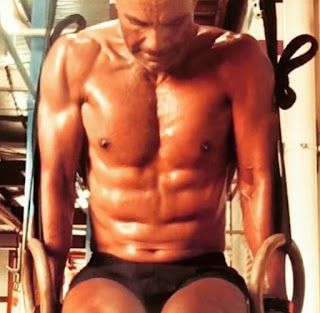And you thought
The Lord of the Rings was over-long. Robert Jordan's fantasy series
The Wheel of Time spanned 14 books, plus companion volumes, a role-playing game, and now a tv series on Amazon Prime. I wanted to see if there was anything gay, lesbian, or queer in the series. I'm going in fresh, with no exposure to the books.
Scene 1: A naked woman gets dressed during lengthy plot exposition, which I ignored. In Creative Writing 101, the first lesson is: "Show, don't tell."
Scene 2: Some women on horseback chasing two men up a mountain (nice scenery). When they catch them, Young Man (Roman Dvorak) yells "Don't hurt him! It's not his fault!", but he turns out to be alone. The head woman explains that the Power is for women only, and he touched it, so he must die. She kills him with her mind.
On top of the mountain, Lan Mandragoran (David Henney) and Moiraine something or other are watching. "He's not the Chosen One," Moraine concludes.
Ya think? "Let's check the Two Rivers next. There are supposed to be four ta'vera there."
I'm guessing ta'vera are men who have the Power.Scene 3: A woman named Edwene or something (I really hate these names) is being initiated into the Woman's Circle. First they braid her hair; then they throw her off a cliff into the river! She survives, but still, it seems a bit barbaric.
Scene 4: An elderly farmer and his hot son Rand (Josha Stradowski) bringing wool to town to sell. Uh-oh, Rand has a thing for Edwene, the girl who was just initiated into the Women's Circle. No doubt hetero-romance is forbidden!
Scene 5: Establishing shots of a village. Looks like early Middle Ages. People frolicking in a pub, including Rand the Farmer's Son, Gambler Mat (Barney Harris, left), and Perrin (Marcus Rutherford, below). They discuss their various heterosexual interests and the rumors of war.
Suddenly Edwene comes in. Everyone congratulates her on a successful initiation (she didn't drown). Rand gives her a Girl-of-His-Dreams gaze.
Boots come walking in the door. It's Lan Mandragoran and Moraine from Scene 2, searching for the Chosen One! Everyone is terrified and obsequious, as if Moraine is the boss, the school principal, and Darth Vader all rolled into one. When she leaves, Perrin scoffs: "She doesn't look like a God of Infinite Power!" "Quiet!" Rand tells him. "She can hear you!"
Scene 6: A woman working at the forge. Perrin comes in and asks why she didn't go to the initiation ceremony earlier. "I love you," he says. "I know." Girl, that's harsh! You have to say it back!
Scene 7: Back at the pub, the barmaids wonder what Moraine the Great and Powerful is doing in their village. The boss (Michael Tuahine) asks Rand the Farmer's Son and Egwene to finish cleaning up ("I'll just leave you two alone, hint hint).
They smooch.
Scene 8: Moraine the Great and Powerful taking a bath. Lan Mandragoran joins her. We see his butt as he climbs into the tub. He thinks the water is too cold, so she warms it. (That's what she uses infinite power for?). They discuss a disturbance in the Force -- the Chosen One is close by!
Scene 9: Rand getting dressed after sex with Egwene (shirtless shot). Egwene has an invitation to become Nyaenve's apprentice, but Rand disapproves: "Being a Wisdom is lonely. No husband, no kids." No same-sex marriage in this world, I take it.
Scene 10: Hooves come clomping into town, at night, in the rain.
Could it be Gandalf? We don't know: we switch to a candy-seller named Padan (Johann Myers) driving around wishing everyone a happy Bel Tine
(could you get any closer to Beltaine?).Then we switch to Perrin and his girlfriend or wife in bed together.
I'm out. It's heterosexual couples all the way down. But in case you are interested, here are a few more hunks from the series.
Alvaro Morte appears in four episodes as Logaine Ablar, an Asha'man of the Black Tower and a False Dragon.
Taylor Napier appears in four episodes as Maksim, one of Alana Mosvani's warders. He doesn't appear in the books, but Maksim, Alana, and the other warder Ihvan have a polyamorous bisexual relationship. Although they're never actually shown kissing.
Peter Franzen appears in three episodes as Stepin, warder to Kerene Nagashi, who leaves the White Tower with her when she is sent by Tamra Ospenya to find the newborn Dragon. He is murdered by the Black Aja. Aren't you sorry you asked?































